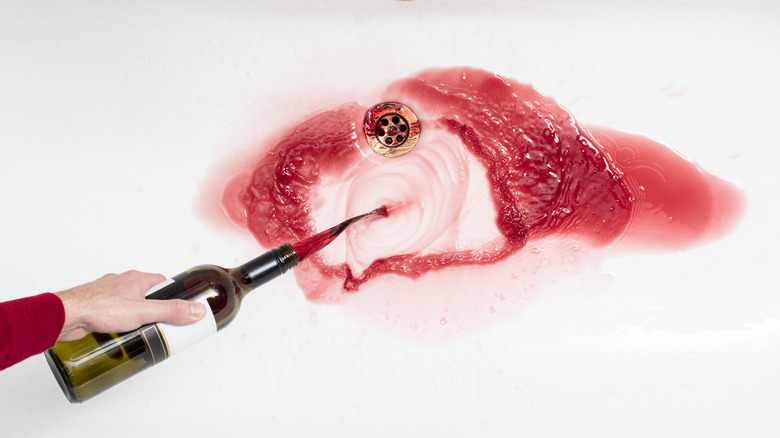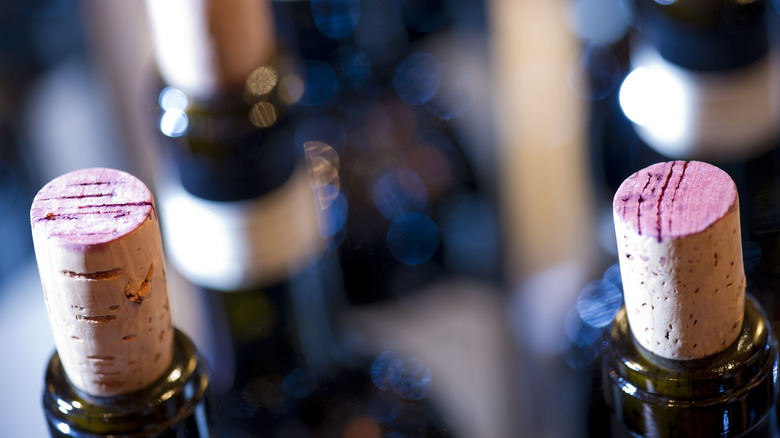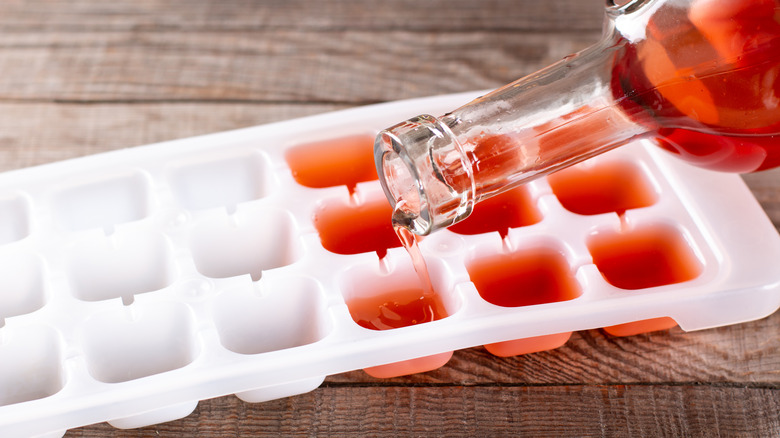How To Tell When Your Bottle Of Wine Has Gone Bad
An unopened bottle of wine can be stored for a long time, but once opened, it becomes a ticking time bomb towards vinegar. Wine oxidizes as soon as it's exposed to air, changing its taste and smell. Before serving, there are a few ways to tell if your bottle of wine has gone bad.
Once you open the bottle, the first thing you can do is check the cork. If there are signs of leakage, then the wine may be bad. This is obvious with red wine, but it's also a good indicator if the cork is wet. Next, pour a small amount into a glass to note the color, smell, and taste. If you're familiar with your wine, you can tell if the color has changed. White wine will appear darker than usual, and red wine will have a more brownish hue. It's helpful to hold the glass up to something white to observe the color. If it's not a sparkling variety, bubbles shouldn't be present.
Give the glass a swirl and inhale the wine's aroma. If it has a pungent odor, it may have turned. Depending on the vintage, this is described as smelling like sulfur, vinegar, or a horse's stable. You may not want to taste it if it makes your eyes water.
Finally, rotten wine has a strong sour taste, akin to vinegar. Dispose of it if it tastes like it could strip paint off a car.
How to store leftover wine
Wine usually takes a few days to go bad, but occasionally, a newly opened bottle has already turned. Excessive heat and a damaged cork can allow air to enter. In this case, try to return the bottle. When you know you'll only enjoy a glass or two, avoid opening an expensive bottle, or purchase smaller bottles, or even canned wine.
If you don't finish an opened bottle, there are some steps you can take to extend its life. First, cork it, or screw the cap back on. Although replacing the cork upside down is more accessible, that may introduce bacteria, so try to fit it as it was initially placed. If it was damaged while being removed, use another airtight bottle stopper to minimize oxidation. There are plenty of products manufactured to remove the air from opened bottles, which can preserve the wine for longer. You can also decant the leftover wine into a smaller, airtight container.
Store leftover white wine in the refrigerator and keep red wine in a dark, cool location, away from the stove and the top of the fridge. If these factors are met, white and rosé wines can last up to five days, red wine up to six days, and fortified wines (like sherry and port) up to three weeks. Sparkling wine should be consumed within two days.
How to use leftover wine in cooking
While drinking defrosted wine isn't advised, using frozen leftovers for cooking is the perfect way to prevent waste and elevate your dishes. Leftover wine is ideal for deglazing a pan, lifting the flavorful fond to make sauces. It can be frozen in plastic ice cube trays and then transferred to resealable plastic bags for storage. A standard ice cube is roughly one ounce or two tablespoons.
Consider the recipes and serving sizes you often prepare, and store wine in appropriate quantities. For instance, a basic red wine reduction sauce for steaks and chops might require ½ cup of wine for two servings. On the other hand, you may need less cooking wine to deglaze a pan.
If you have a lot of leftover wine, it can be made into a flavorful simple syrup. Generally, the ratio of one cup of sugar to three cups of wine is used to create a wine simple syrup. Use this sweet and tangy ingredient to flavor shrub or spritzer cocktails, ice cream, berries, and vinaigrettes. It can also be used to keep cake layers moist.



